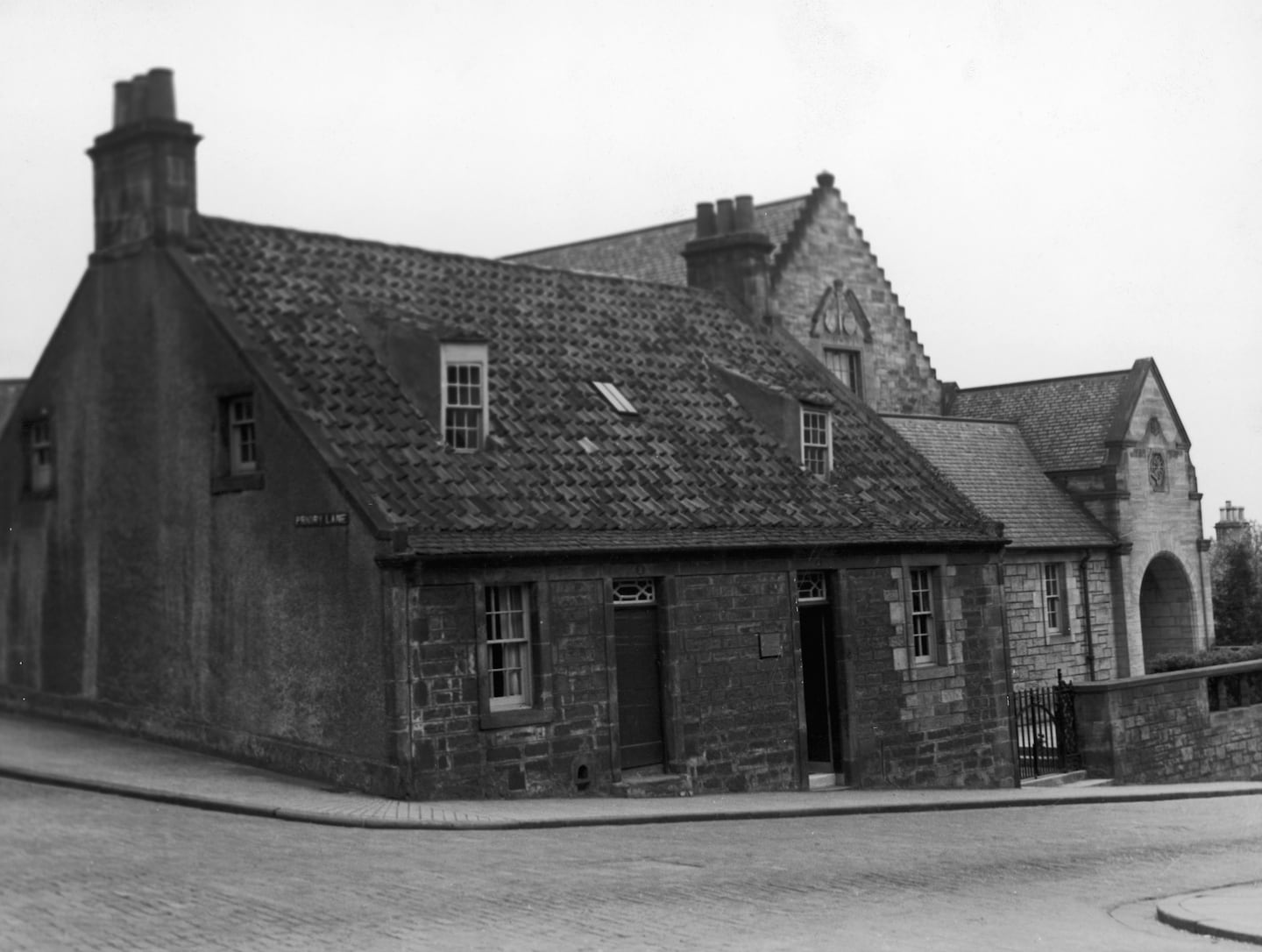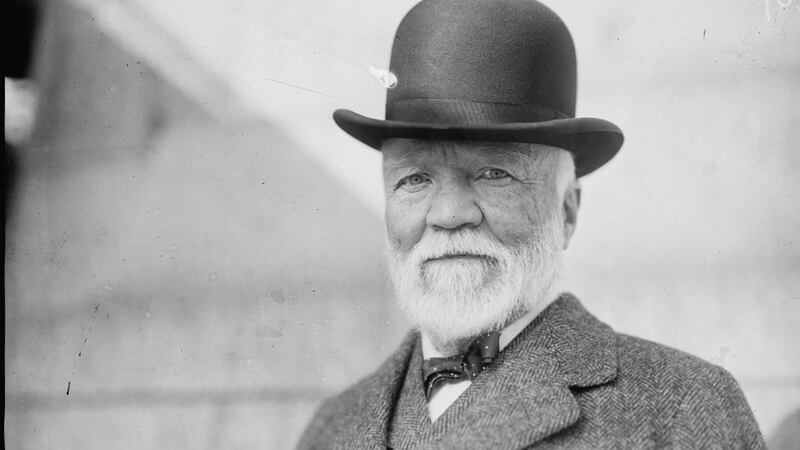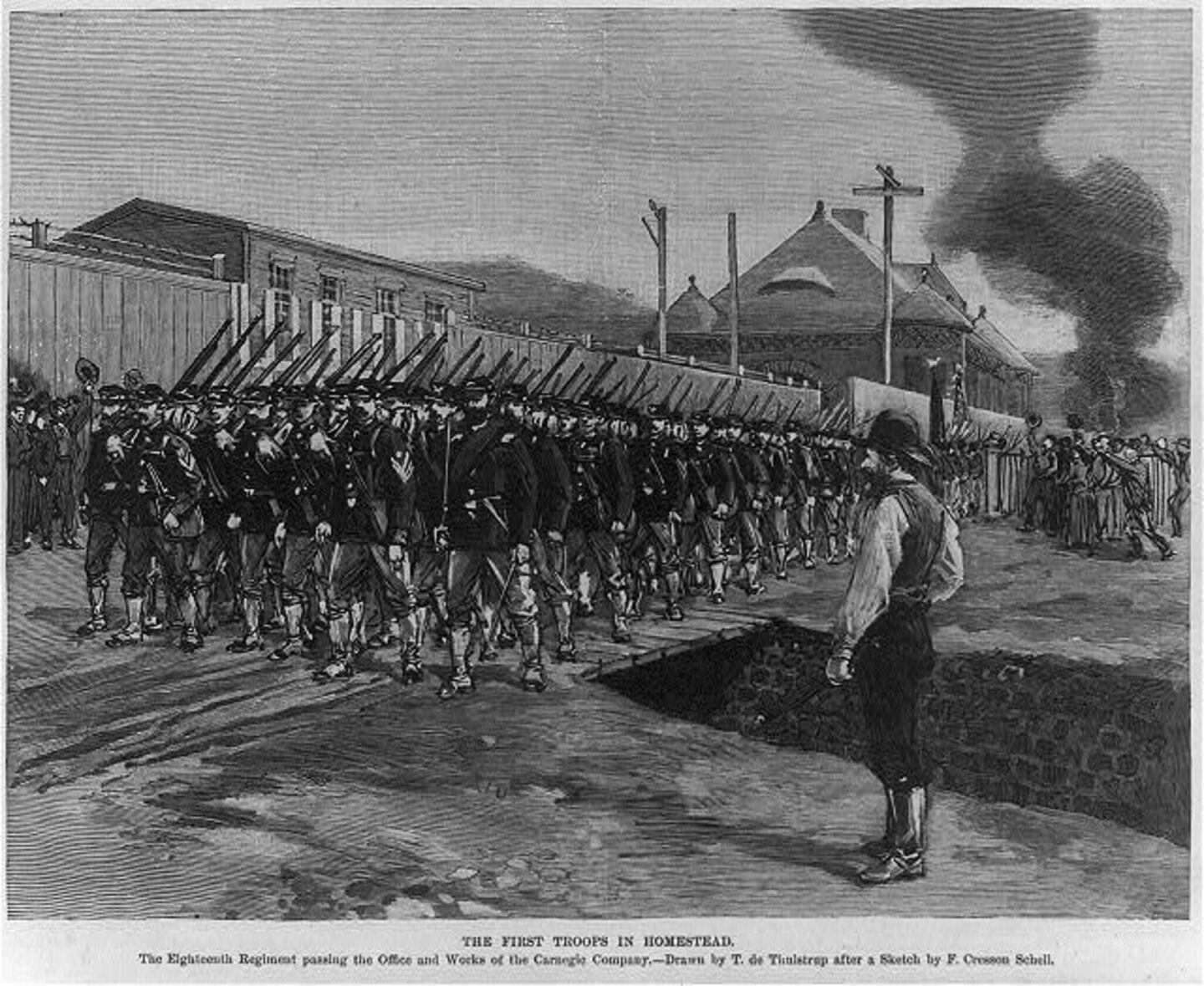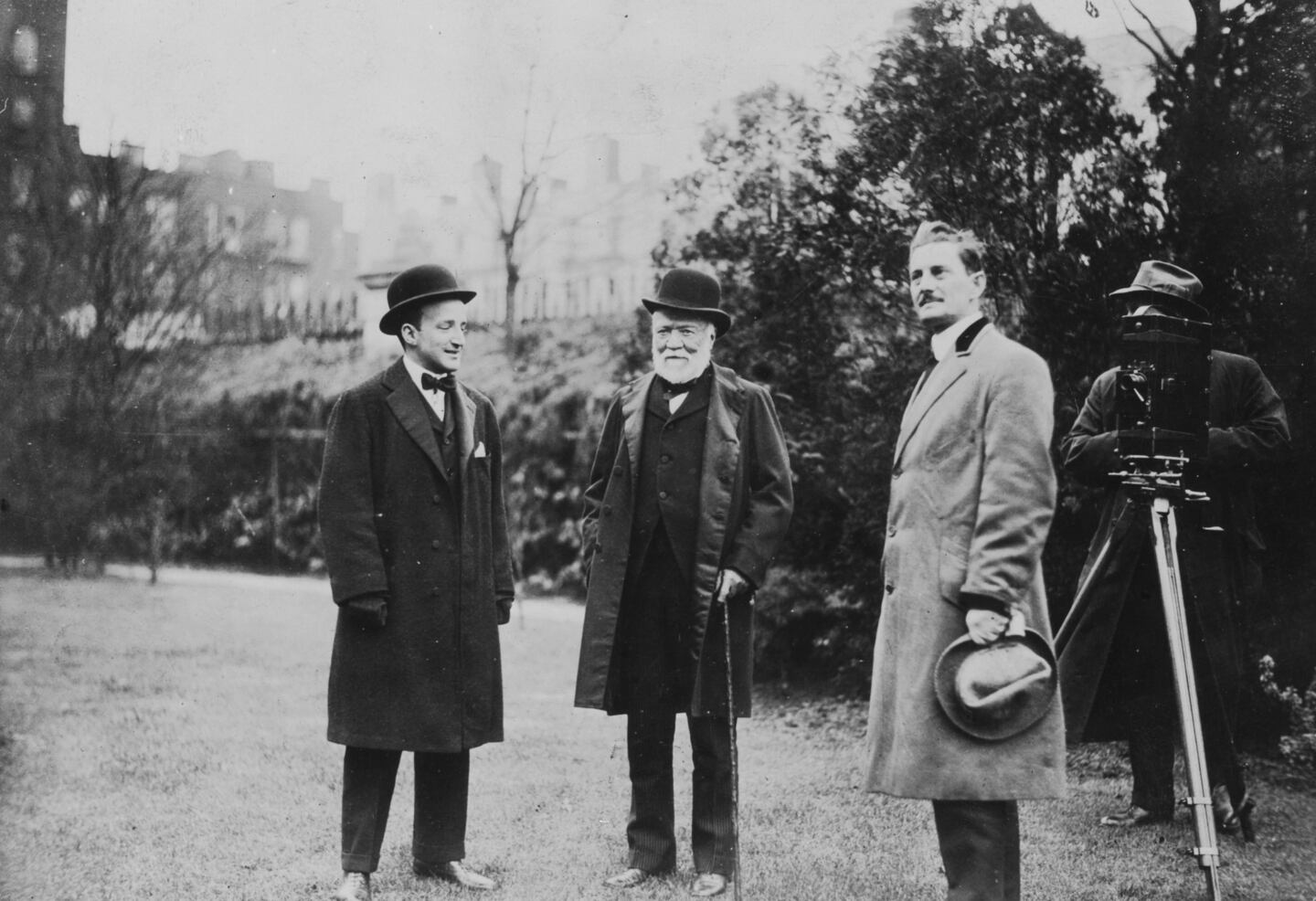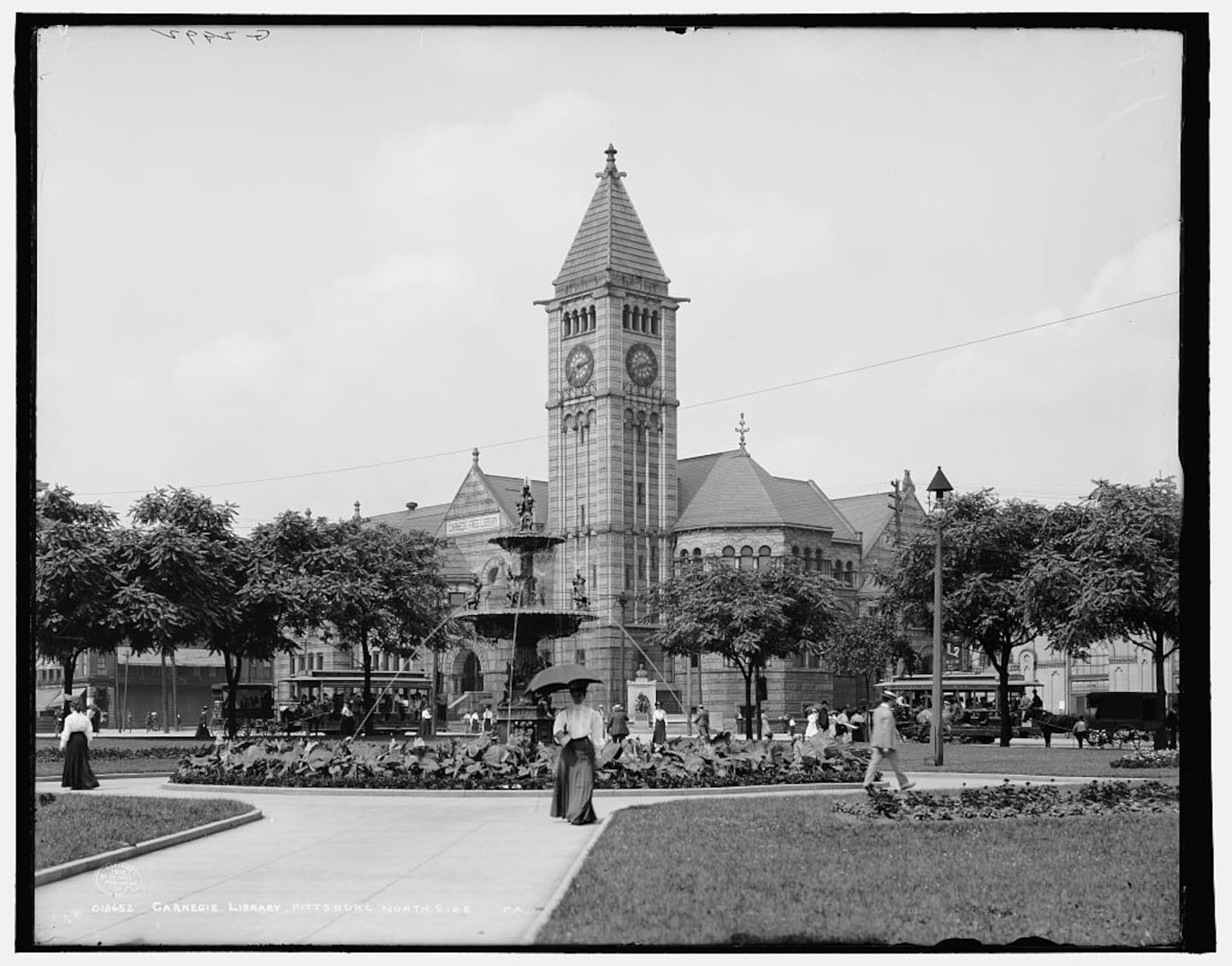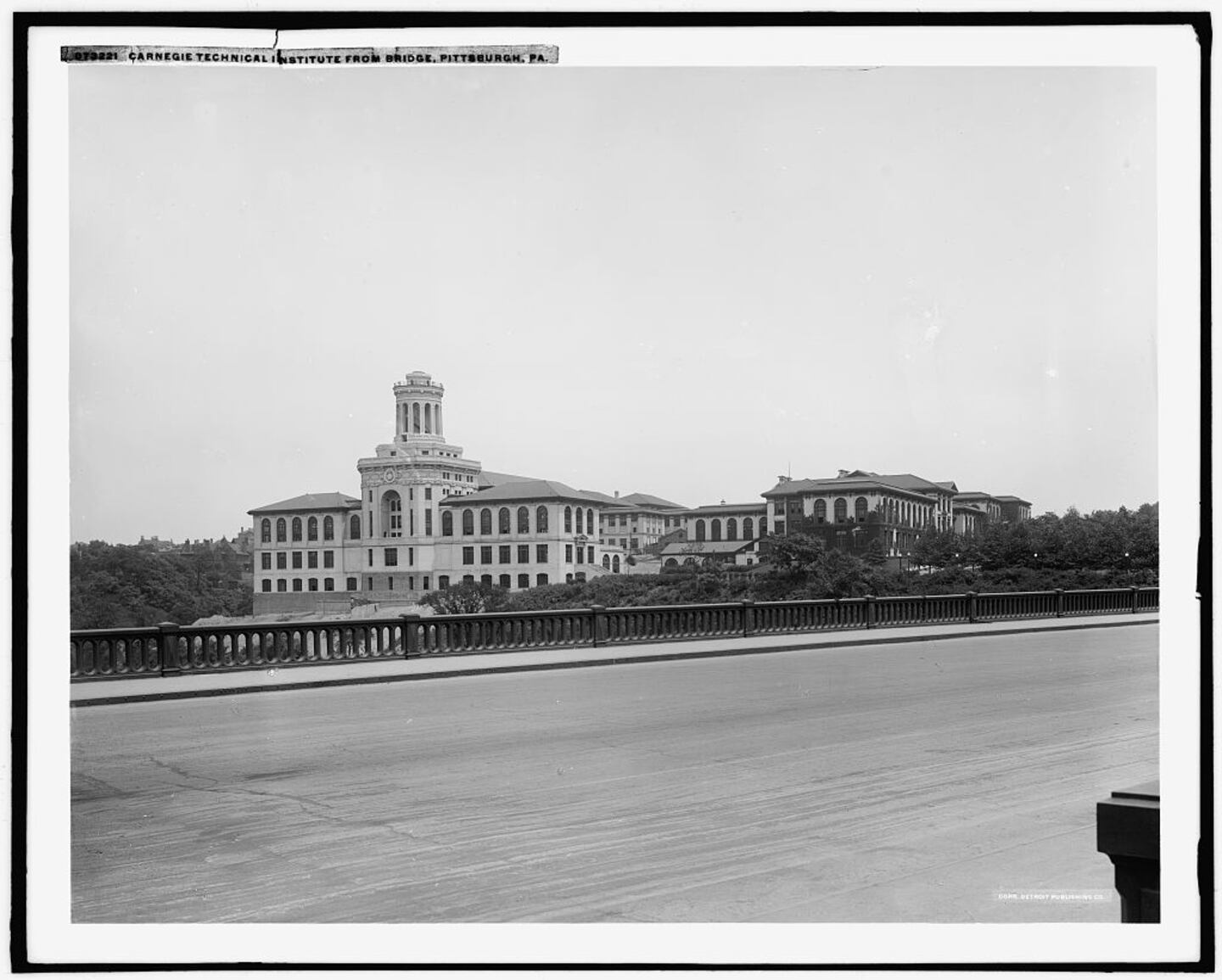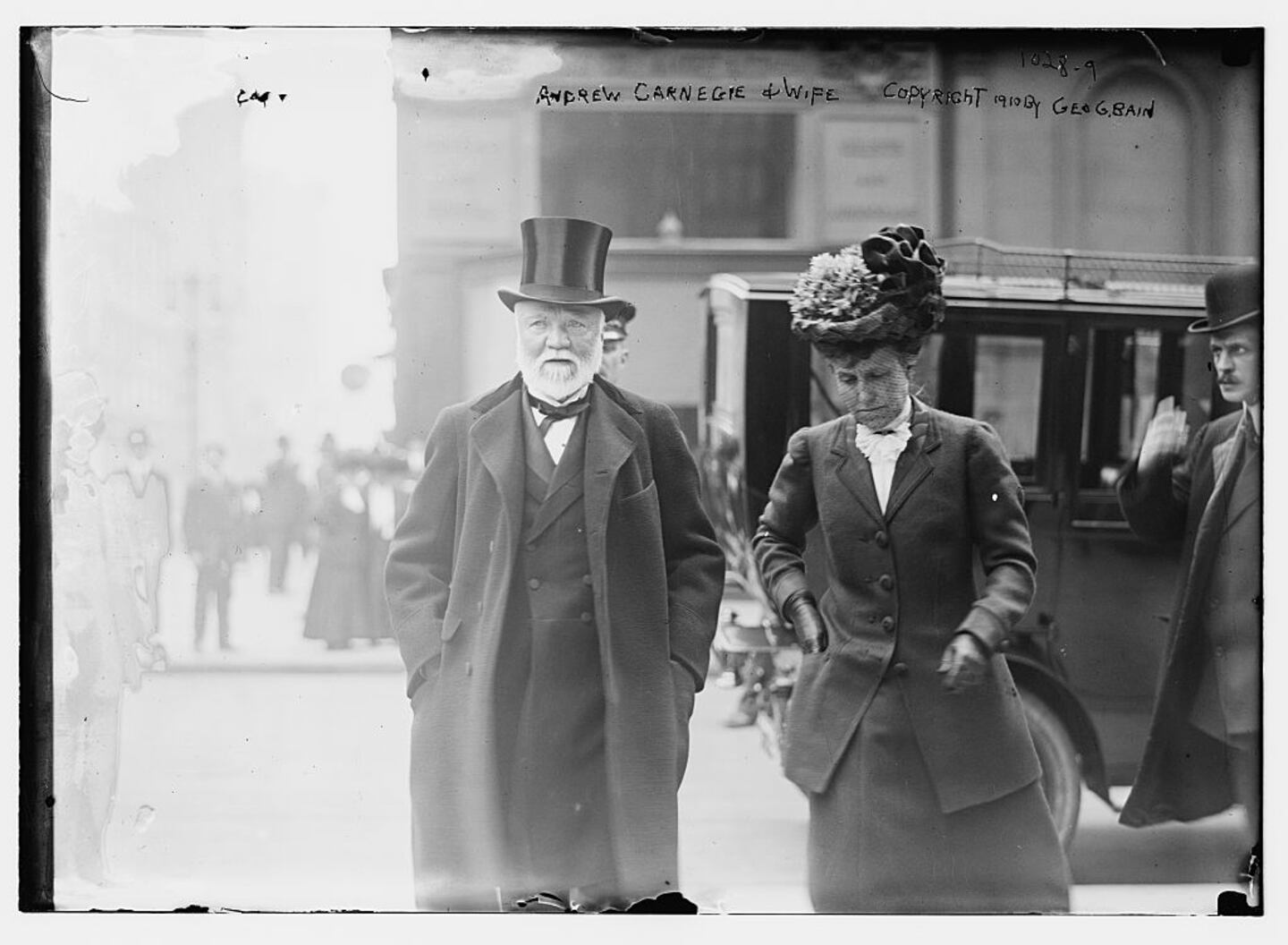PITTSBURGH, Pa. — In the 1890s, Andrew Carnegie, a noted Pittsburgh industrialist and the “Father of Modern Philanthropy," began making substantial investments in Oakland. The Carnegie Institute, which eventually included a natural history museum, art museum, music hall and an adjoining library, was referred to by Carnegie as his “monument” to the people of Pittsburgh.
Carnegie believed that people should spend the first third of their lives becoming educated, the middle third making money and the final third giving it all away for the betterment of mankind. One of Carnegie’s closest advisors, William J. Holland (then-chancellor of the University of Pittsburgh) suggested he build more than just a library. Holland would become the director of the Carnegie Museums from 1901-1922.
Carnegie agreed with Holland and launched an architectural design competition that was the largest in America up until that time, with 97 architectural firms competing for the prestigious project. The firm of Longfellow, Alden & Harlow won, but Carnegie eventually had some “buyer’s remorse” about the towers they proposed. The foundation was laid in 1892 and construction took three years.
The Carnegie Institute embodied Carnegie’s vision that everyone from millworkers to affluent society should have access to the wonders of nature, history and art, and the building itself was to be a cultural hub for Pittsburgh when it opened on November 5, 1895.
Two large towers soared over the Cleveland gray sandstone of the Italian Renaissance style building, with the inscription “Free to the People” above the main entrance. The North Wing housed the art collection and the South Wing was dedicated to science. The library and its reading rooms were located between them in the Main Hall. Outside, each wing had its own entrance and the names of artists and scientists were carved into their cornices. Inscriptions honoring great writers were placed below the second story windows of the library.
Shortly after the building opened, Carnegie was already planning for its expansion. In what would become a huge project spanning three years of construction, the Hall of Architecture, Hall of Sculpture and Bruce Galleries were added, along with dedicated entrances along Forbes Ave. The two towers that flanked the Music Hall were also removed at Carnegie’s insistence, because he thought they looked like rabbit ears.
At the dedication ceremony of the new galleries in 1907, Carnegie told the crowd that, “The success of Library, Art Gallery, Museum and Music Hall -- a noble quartet in an immense building -- is one of the chief satisfactions of my life. This is my monument...”
When it opened the Department of Fine Arts, as the Museum of Art was known at the time, it was located in what has become the Main Branch of the Carnegie Library of Pittsburgh.
The Carnegie Museum of Art was given a unique directive by Carnegie, told to focus on contemporary art and to collect the “old masters of tomorrow." Other museums of the time only concerned themselves with collecting already notable artistic works.
Carnegie started a series of exhibitions in 1896, known as the Carnegie International, and essentially founded what is arguably the first museum of modern art in the U.S. Acquisitions to the museum’s collection were made from this series. The Carnegie International is held every three to five years.
The museum’s name was changed in 1963. The name was further changed in 1986 to the Carnegie Museum of Art to better link it to the other Carnegie Museums.
The Scaife Galleries opened in 1974. The expansion on the building’s eastern side nearly tripled the museum’s gallery space. It underwent a year-long renovation in 2003 which modernized the climate control systems, replaced skylights and created new galleries that have floor-to-ceiling display areas.
Sharing the building is the Carnegie Museum of Natural History, which features everything from Egyptian artifacts to dinosaurs. The museum has about 22 million specimens spread out over 115,000 square feet in 20 galleries.
TRENDING NOW:
Carnegie was fascinated by the idea of having a dinosaur in the museum, and after failing at efforts to purchase one, he assembled his own team to find a suitable fossil. They succeeded, and found enough differences with prior species to name a new one after their benefactor the Diplodocus carnegii (though it was recently rejected). Early expeditions sent more than 400 crates of fossils back to the museum. The original “Dippy” has been on display in the museum ever since and casts of the skeleton can be found in museums around the world.
The museum is also known for its extensive collections of exotic wildlife taxidermy, minerals and gems, flora and fauna from around the world and millions of other objects.
The Hall of Architecture holds the largest collection of plaster casts in America, including the West Portal of Saint-Gilles-du-Gard, which is likely the largest architectural cast ever made.
The Music Hall, featuring nearly 2000 seats and lavishly appointed with velvet and gilding, was home to the Pittsburgh Symphony Orchestra at its inception. The venue is credited with having near-perfect acoustics. Today the Music Hall is home to Chamber Music Pittsburgh and the Pittsburgh Symphony Orchestra has relocated to Heinz Hall.
Occupying the west end of the building is the Main Branch of the Carnegie Library of Pittsburgh and the Western Pennsylvania Genealogical Society.
The Main branch is the primary, full-service resource for the library system’s current, historical and digital collections. It contains more than 2.5 million items in a wide variety of formats and genres housed in an 11-story book stack. The Pennsylvania Department serves as a repository for local history and genealogy resources.
The Western Pennsylvania Genealogical Society was established in 1974 and is an organization of family historians and genealogists dedicated to enabling family history research. The WPGS moved to the Carnegie Library in 1995, after the Historical Society of Western Pennsylvania, with which the WPGS had shared a building on Bigelow Boulevard, moved to the Senator John Heinz History Center in the Strip District.
The start of Carnegie’s life gave little indication of the influence and wealth he would eventually attain. His was truly a “rags to riches” story.
Carnegie was born on November 25, 1835, in Dunfermline, Scotland, just as the town’s linen industry collapsed. His father was a weaver who also busied himself in local politics. With strikes and machinery interrupting his father’s pay, his mother repaired shoes and opened a grocery store that was soon struggling as well.
As the grip of poverty began to strangle the family, they were encouraged by his mother’s sister to come over to America, where the opportunities were better. The Carnegies auctioned everything they owned and still had to borrow money to get passage for the whole family. After 50 days at sea, they arrived in America and settled in Pittsburgh in 1848.
Pittsburgh’s industrial might was written in smoke and soot. While downtown was full of new buildings as the city rebuilt itself from the Great Fire of 1845, they were already so blackened that old and new looked alike. The city may have sold its purity for purpose, but it was paying off. Pittsburgh was a place where fortunes were being made and was one of the centers of the industrial revolution.
Carnegie spent his early years working in a cotton mill and for telegraph and railroad companies. His duties took him all over the city and he memorized the streets and addresses of important people. In his downtime, he studied at a small library provided by a retired local merchant and absorbed Shakespeare at a local theater. Eventually, Carnegie’s work ethic caught the eye of a young railroad executive, Thomas Scott, who hired him as his private secretary and personal telegrapher.
As Carnegie’s paychecks grew, he put his savings to work with astute investments. Leveraging his skills and railroad connections, he was instrumental in the successful merger of two sleeping car manufacturers. He also advised his younger brother, Thomas, on stocks to buy, and Thomas made a lucrative living in the shadow of his big brother.
By the time the Civil War broke out, Scott was hired to supervise military transportation for the North, and Carnegie was his right-hand man.
Carnegie was deployed to rebuild destroyed rail lines and reconnect telegraph lines when he found himself in the proximity of the Battle of Bull Run. He set up a telegraph office in Washington and wrote in his autobiography of how President Abraham Lincoln would sometimes sit at his desk waiting for dispatches from the front.
After the war and the rapid pace of innovation in the iron industry that arose in its wake, Carnegie resigned from the railroad and again leveraged his knowledge and connections to start a bridge company. The Keystone Bridge Company specialized in replacing wooden bridges with iron ones, which was a lucrative business in post war America.
In concert with his brother Thomas, Carnegie built the company’s first enormous “Lucy” blast furnace along the Allegheny River near 51st Street. The furnace was named for Thomas’ wife, Lucy Coleman, the daughter of Pittsburgh iron manufacturing magnate William Coleman. Thomas would go on to co-found the Edgar Thomson Steel Works with Coleman and others, building the plant in Braddock, which is still in operation.
By 1868, Carnegie was a wealthy man, but troubled by his wealth. At the age of 33 and living in New York City, he wrote a letter in which he vowed to quit his businesses in two years so that he could spend his time pursuing a life of good works. It was a noble sentiment, but the pace of innovation prompted Carnegie to defer his “retirement” for a few years longer than that.
New methods of refining steel caught Carnegie’s eye and, in 1875, he poured his fortune into a new steel plant. The Homestead Steel Works plant used a process invented by Henry Bessemer to convert huge batches of iron into flexible steel and Carnegie incessantly drove down costs while scaling up production.
Carnegie brought Henry Clay Frick on as a partner in 1881, and within a few years Carnegie was one of the wealthiest men in America.
By this time, Carnegie was living in New York City much of the time. He was devoted to his mother, but the 45-year-old industrialist was also attracted to 23-year-old Louise Whitfield. Whitfield’s mother required constant medical attention but supported the courtship, while Carnegie’s mother actively worked to undermine it. They secretly became engaged in 1883, but it was not until six months after his mother’s death in 1886 that Carnegie consented to marry in a private ceremony.
The Carnegies signed one of America’s first prenuptial agreements. The arrangement set the stage for Carnegie’s plans to give away his fortune, but also provided for Louise and their only daughter Margaret. Unlike other family dynasties and “old money” from that time, all of Carnegie’s lineage are self-made professionals and none live with the Carnegie last name.
Carnegie’s reputation for benevolence towards his workers became tarnished during the Homestead Strike of 1892. After his brother Thomas died a month before his mother, Carnegie began to lean more heavily on Frick to manage his plants. Frick was working as his plant manager as he hired 300 Pinkerton guards to intimidate the strikers. The tension soon shattered into violence, resulting in the deaths of nine strikers and seven guards. The strike ultimately failed and the union lost much of its power, with the company quickly raising production quotas and working hours, while also lowering wages and Carnegie’s personal reputation simultaneously.
By 1900, Carnegie Steel was making more steel than all of Great Britain. Carnegie, now 64 years old, was well past his avowed retirement date, and rather than fight the competition from J.P. Morgan’s company, he decided to sell to Morgan. He wrote an asking price for his business on a small piece of paper and sent it to Morgan, who accepted it without hesitation. The $480-million deal created Morgan’s new empire, the United States Steel Company, and instantly made Carnegie the richest man in the world.
Estimates vary, but Carnegie’s fortune is valued at about $419 billion today—over three times as much as Amazon founder Jeff Bezos, who is currently the world’s richest man.
Finally freed of his business obligations and living mostly at the 13th-century Skibo Castle in Scotland, where every day was started by the resident bagpiper, Carnegie fervently pursued what he considered to be his redemptive works of philanthropy in an age largely defined by robber barons. He wrote of his intentions to give away his fortune in “The Gospel of Wealth” in 1889, proclaiming that the rich should live without extravagance and use their finances to promote the happiness of others, such that “the man who dies thus rich dies disgraced.”
The first recipients of Carnegie’s generosity were the mill workers of Homestead. The establishment of a pension and relief fund was “an acknowledgment of the deep debt which I owe to the workmen who have contributed so greatly to my success.”
One of Carnegie’s most visible efforts was to build free libraries. Remembering the education he’d acquired from that retired merchant’s free library in Pittsburgh as a boy, Carnegie founded 2,509 libraries around the world (1,679 of which were built in the U.S.). The first library to open was near his mill in Braddock, but the first to be commissioned by Carnegie was in his adopted hometown of Allegheny City on the North Side. The building, dedicated by President Benjamin Harrison, served as a library until it was damaged by a lightning strike in 2006 and has since reopened as the home of the New Hazlett Theater.
Interested in elevating working-class men and women through the practical learning of trades, Carnegie funded the Carnegie Technical Schools in 1900. Booming enrollment led to more programs and the school outgrew its original two buildings, leading to a massive expansion and a completely new campus to go with its new name: Carnegie Tech. The school would go on to merge with the Mellon Institute in 1967 to become Carnegie Mellon University.
Many of Carnegie’s greatest contributions were to the furtherance of education and educators. “Of all professions, that of teaching is probably the most unfairly, yes, most meanly paid, though it should rank with the highest,” wrote Carnegie in his autobiography. He was bothered by the lack of retirement security for professors, to whom endowed the Carnegie Foundation for the Advancement of Teaching, which would later spin off the Teachers Insurance and Annuity Association of America (TIAA) to provide fully funded pensions for educators. TIAA is now one of the world’s largest financial services companies.
By the age of 76, Carnegie had succeeded in giving away 90% of his fortune, and endowed over a dozen institutions.
But despite his proficiency at disbursing his wealth, there was still so much left that Carnegie grew weary of managing it. At the suggestion of a friend, he founded the Carnegie Corporation of New York in 1911. The corporation was the largest single philanthropic charitable trust ever established at that time. It has since woven its philanthropic efforts into history, supporting everything from the discovery of insulin to Sesame Street. Carnegie’s directive was that the foundation would continue his work in perpetuity, so that “even after I pass away the [wealth] that came to me to administer as a sacred trust for the good of my fellow men is to continue to benefit humanity for generations untold.”
With international agitations rising, Carnegie called for a “league of nations” to prevent all future wars. To facilitate his hopes for a civilized world of peace, he was persuaded to fund the creation of a world court. The Carnegie Foundation was created to build the Peace Palace at The Hague, and he also created the Carnegie Endowment for International Peace in 1910 with the hope of averting war.
Believing he had a personal promise from the German leader, Kaiser Wilhelm II, not to go to war, Carnegie was so optimistic in a Utopian future shaped by education that he (naively) wrote in 1912: “The safest occupation in the land today, either in Britain or America, is that of a soldier, who rarely or never sees a battle or fires a hostile shot, but marches from youth to age in perfect safety, unmolested. … We cannot imagine that many students who have received years of precious education will hereafter dedicate themselves deliberately to this profession.”
When World War I broke out in 1914 despite his efforts, he was described by Louise as “heartbroken” and that he felt he had been personally betrayed. Carnegie, who had been writing his memoirs, made his last entry on that day, writing: “The world convulsed by war as never before! Men slaying each other like wild beasts! I dare not relinquish all hope.”
Carnegie lived another five years at his estate in Massachusetts, called Shadowbrook. The 100-room mansion reminded him of Scotland and he was said to have enjoyed fishing on the nearby Lake Mahkeenac (now known as the Stockbridge Bowl).
In the spring of 1919, haunted by years of ongoing war news, he became ill and bedridden. It is said that throughout that summer his voice could be heard daily calling for Louise, “Wife, has the war stopped yet?” He died of pneumonia at 7:10 in the morning of August 11, at the age of 83 and just two months after the signing of the Treaty of Versailles.
Carnegie’s body lay in state in Shadowbrook’s oak ballroom and there was a small private funeral. Twenty years older than his beloved wife, Carnegie assured her after his death that his only wish was to be buried beside her. Louise purchased a plot in Sleepy Hollow Cemetery and followed him there in 1946. The gravestones were hewn from a quarry on the grounds of Skibo Castle, now a private club.
Shadowbrook became a seminary for Jesuit priests in 1922. It was destroyed by a horrific explosion and fire in 1956, which killed three priests and a lay brother.
Today the property is home to a health and yoga retreat center that sits just a few hundred yards from where the mansion stood.
Cox Media Group


























































